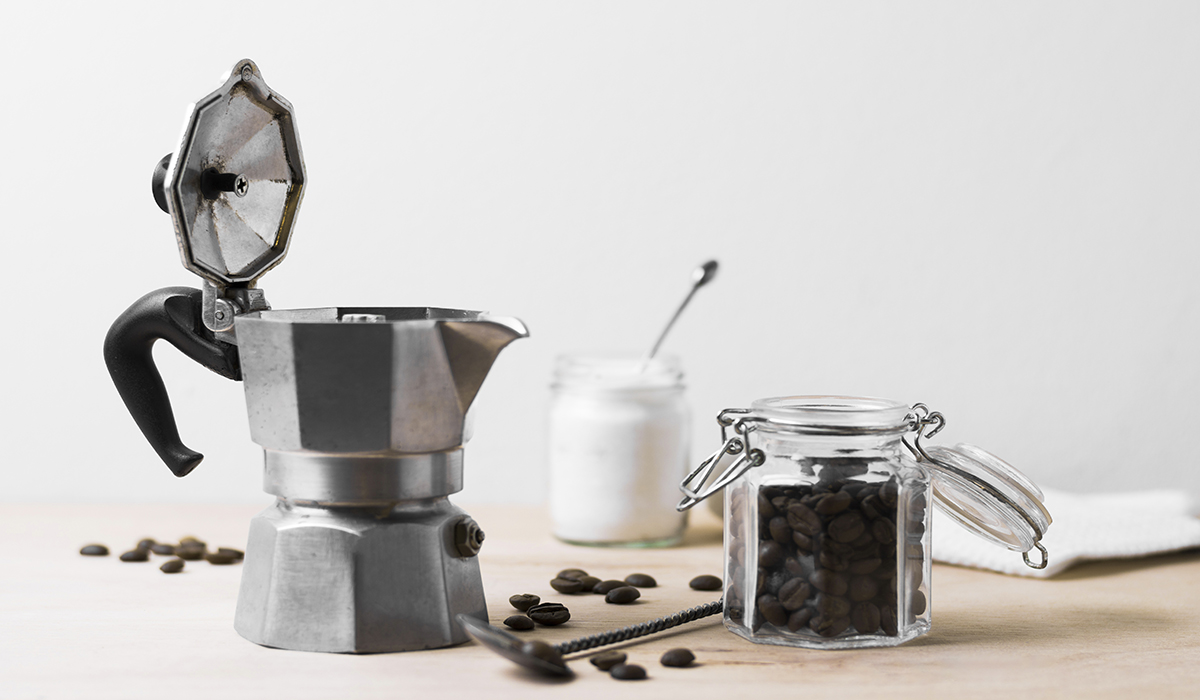A Complete Guide to Coffee Blend

Blended coffee is the combination of coffee beans from different regions of the world, crafted to produce a unique and refined aroma and flavor. Owing to its diversity in taste and scent, blended coffee has captured the attention of many coffee lovers. In this article, we will delve into the various aspects of blended coffee and provide key insights to help you choose the perfect blend for your taste.
What Is Blended Coffee?
If you’ve ever come across the term “blended coffee” and weren’t quite sure how it differs from other types of coffee, this guide is for you. Blended coffee refers to the combination of beans from various origins to create a balanced, consistent, and sometimes truly unique flavor. Unlike single-origin coffee, which comes from a specific geographical area, blended coffee allows you to experience the best characteristics of multiple coffee beans in one cup.
Blended Coffee vs. Single-Origin Coffee
Many people encounter terms like specialty coffee and coffee blend while shopping. But what really distinguishes a blend from a single-origin coffee?
A coffee blend typically combines different coffee beans to achieve a particular balance, unique flavor profile, or consistency. Single-origin coffees, on the other hand, usually reflect distinct flavor notes shaped by the region’s climate and processing methods. While single-origin beans come from a specific farm or region, blending enables the unification of strengths from different beans. For example, Diamante blended coffee is crafted using beans from various origins to achieve flavor harmony and a more enjoyable drinking experience. A popular blend might include 70% Brazilian Arabica and 30% Indian Robusta, ideal for those who prefer bold espresso with rich crema.
Types of Blended Coffee
Blended coffee can be made using a variety of beans. A common and widely appreciated type is a blend of Arabica and Robusta. Arabica beans are known for their mild flavor and fragrant aroma, while Robusta beans are appreciated for their bitterness and higher caffeine content. Blending these two can result in a rich and balanced taste profile that appeals to a broad audience.
Additionally, blends may feature beans from different regions. For instance, a mix of Ethiopian and Brazilian beans yields fruity and chocolaty notes. Every blend can reflect the culture and unique characteristics of its origin. Various blend ratios are used to achieve different flavor outcomes.
Some common ratios include:
- 70% Arabica, 30% Robusta: for smooth taste with higher caffeine
- 60% Arabica, 40% Robusta: for balance between flavor and bitterness
- 50% Arabica, 50% Robusta: for a well-rounded brew
- 40% Arabica, 60% Robusta: stronger and more caffeinated
- 80% Arabica, 20% Robusta: for a sweeter and smoother cup

Processing Methods in Blended Coffee
The processing method plays a vital role in high-quality blended coffee. Beans used in blends may be processed using dry (natural), washed, or honey methods. Combining beans with different processing techniques can produce a more layered and complex flavor profile. Professional brands like Diamante Coffee Blend carefully select beans whose processing methods complement one another, ensuring flavor synergy in the final product.
How to Make Blended Coffee
To prepare blended coffee, start by selecting beans—Arabica, Robusta, or a combination. Since each bean has its own unique traits, it’s important to choose varieties that complement one another.
Grind the beans to a fine consistency for better extraction. Grinding affects the taste, so proper grind size is key. You can brew your blended coffee using methods like French press, espresso machine, or Moka pot. As you brew, experiment with different ratios and take note of the resulting flavors. This process helps you discover the blend that suits your palate best.
A Closer Look at the Blending Process
- Selecting the Beans: Choose beans with diverse flavor profiles from different origins.
- Testing Ratios: Try various proportions to find the most satisfying flavor balance
- Roasting: Blending can occur before roasting (pre-roast blend) or after (post-roast blend).
- Tasting: After roasting, the coffee is tasted to ensure flavor consistency and balance.
Popular Blends for Blended Coffee
One classic combination is Latin American beans with African beans (e.g., Brazil and Ethiopia), which delivers an excellent balance of body, sweetness, and acidity. Blending Robusta with Arabica also enhances caffeine content and crema for espresso lovers.
How Is Blended Coffee Roasted?
Roasting is critical in determining the final flavor of a blended coffee. In pre-roast blends, beans are roasted together for a more unified profile. In post-roast blending, each type of bean is roasted separately and then combined, allowing the preservation of each bean’s unique attributes.
Tips for Proper Extraction
Great extraction is the difference between an ordinary cup and an exceptional experience. Here are some tips for brewing blended coffee:
- Use freshly roasted beans.
- Match grind size with your brewing method.
- Water temperature should be between 90°C and 96°C.
- Use clean, chlorine-free water.
- Maintain a proper coffee-to-water ratio (e.g., 1:15 for pour-over).
Best Brewing Methods for Blended Coffee
The ideal brewing method depends on your blend. French press, pour-over (V60), and espresso are generally excellent choices. If your blend includes Robusta, a Moka pot or espresso machine will enhance crema and depth. For Arabica-heavy blends, manual methods like V60 bring out fruity acidity and clarity.
Buying Blended Coffee
Purchasing the right blended coffee is a crucial step. With the rise of online marketplaces, buying blended coffee has never been easier. Many online stores offer a wide variety of blends for comparison and selection.
While shopping, consider bean quality, roast date, and blend composition. Trusted brands with a reputation for crafting premium blends—like Diamante Coffee Blend—are reliable options.
They are also a notable player in the Wholesale Coffee Blend in Iran market, providing blends suited for both professional and personal use.
Are Coffee Blends Better for Cafés or Home Use?
Both! Blended coffee is favored by cafés due to its flavor consistency and compatibility with various brewing equipment. Baristas can deliver a uniform taste in every cup. Meanwhile, home brewers enjoy exploring flavor diversity, especially when customizing their own blends.

Who Uses Blended Coffee?
- Cafés and restaurants: To ensure a reliable and pleasant flavor experience.
- Commercial coffee brands: To establish a signature taste.
- Home coffee lovers: To discover new flavors and personalize their brew.
Which Blend Is Right for You?
Consider the following when selecting your ideal blend:
- For a mild, sweet, and aromatic cup: 80% Arabica + 20% Robusta
- For higher caffeine and bitterness: Try a 50/50 Arabica and Robusta mix
- For a strong espresso with thick crema: Go for 60% Robusta + 40% Arabica
Tips for Choosing the Best Blended Coffee
When selecting blended coffee, pay attention to the aroma and flavor compatibility of the beans. The beans should harmonize while maintaining their individual qualities. Adjust the ratio based on your taste—more Robusta for strength and caffeine, more Arabica for smoothness and complexity.
Also, prioritize quality and brand reputation. Choose trusted vendors, read customer reviews, and always opt for freshly roasted coffee beans . Diamante blended coffee, known for its excellence in the Iranian market, remains a standout choice.
Why Is Coffee Blending Important?
Blending affects not just the flavor but also the brand consistency. Since the quality of beans from a single farm may vary across seasons, blending helps maintain a stable flavor profile. It’s also essential for brand identity, as consumers associate specific flavor signatures with certain brands.
Conclusion
Blended coffee offers a remarkable and rewarding journey through a cup. Learning about its types, preparation, and purchase tips allows you to confidently find or create your favorite blend.
Brands like Diamante Coffee Blend lead the way in offering high-quality options. With experimentation and a little exploration, you can uncover the perfect blend tailored to your taste—and enjoy the true essence of blended coffee.
FAQ
1. Does blended coffee have lower quality compared to single-origin coffee?
No. The quality of blended coffee depends on the selection of beans and the skill of the blender. Some of the world’s finest coffees are made by combining high-quality beans.
2. Can I make blended coffee at home?
Yes. If you have access to different coffee beans, you can create your own blend by mixing them and experimenting with taste. Home blending is a fun and rewarding way to personalize your coffee experience.
3. How can I find the right coffee blend for me?
Trying different brands and blend ratios is the best way to discover your ideal flavor. Pay attention to taste notes, body, sweetness, and acidity. Over time, you’ll develop a deeper understanding of what suits your palate best.
